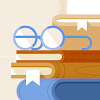Learn HTML from Scratch: Beginner’s Guide to Web Development

In today’s digital age, knowing how to build a website is a highly valuable skill. Whether you’re planning to start a personal blog, build a portfolio, or kick off a career in tech, understanding HTML is your first step into the world of web development. But where do you start, especially if you're completely new to programming? This beginner’s guide is designed to help you learn HTML from scratch, providing the foundation you need to grow confidently in your web development journey.
What is HTML and Why Is It Important?
HTML stands for HyperText Markup Language. It’s the standard language used to create and structure content on the web. Every website you’ve ever visited is built, at its core, with HTML. It defines elements like headings, paragraphs, links, images, and more. While modern websites use other technologies like CSS and JavaScript for styling and interactivity, HTML is the structural backbone of the web.
Learning HTML for beginners is like learning the alphabet before writing sentences. Without it, you simply can’t communicate on the web.
Learn HTML for Beginners: Getting Started
If you’re wondering how to begin, you’re not alone. Many beginners feel overwhelmed by the idea of learning a new “language,” but HTML is different. It’s simpler than programming languages because it doesn’t involve complex logic or calculations. It’s more about structure and presentation.
The best way to learn HTML for beginners is by first understanding what a website is made of. Think of a website like a document. HTML organizes that document into sections—titles, subtitles, paragraphs, bullet points, images, and links. By learning how to mark up content correctly, you’re essentially telling web browsers how to display that information.
Understanding the Building Blocks
When starting to learn HTML, it helps to break things down into simple components. HTML is made up of elements, which are the building blocks of a webpage. These elements represent different types of content. Each element tells the browser something specific about the content it contains—whether it’s a heading, a list item, or a hyperlink.
As a beginner, focus on understanding the purpose of these elements and how they help organize content on the page. You don’t need to memorize everything at once. Start small and build up as you go.
Practice and Consistency Matter
One of the best ways to learn HTML for beginners is through consistent practice. Even though we’re not diving into actual code in this article, the principle remains: just like learning a new language, repetition and usage are key. The more time you spend experimenting and applying what you’ve learned, the more confident you’ll become.
Try imagining how you’d build a simple webpage in your head. Think about the different parts you’d need—maybe a title, a few paragraphs of text, and some links. Understanding how these pieces fit together is the first step toward mastering HTML.
Why Learning HTML Is a Smart Investment
HTML is not just for aspiring web developers. It’s a useful skill for marketers, writers, designers, entrepreneurs, and anyone who works with digital content. Knowing even the basics allows you to tweak webpages, format content correctly, and collaborate more effectively with developers.
Plus, learning HTML often leads to an interest in other web technologies. Once you’re comfortable with HTML, you may find it easier to explore CSS, JavaScript, or content management systems. It opens the door to new career opportunities and creative projects.
Staying Motivated as a Beginner
Starting anything new can feel intimidating, but the key is to stay curious and patient. Set small, achievable goals. For example, your first goal could be to understand what HTML does. Then move on to recognizing a few common elements. As your knowledge grows, so will your ability to build more complex pages.
Remember, you don’t need to become an expert overnight. Everyone starts at the beginning, and the path to learning HTML is filled with small victories that add up over time.
Final Thoughts
To learn HTML for beginners, you don’t need expensive tools or previous experience—just the willingness to start and the commitment to keep going. The best way to learn HTML for beginners is by understanding its role, exploring its building blocks, and practicing consistently.
By learning HTML from scratch, you’re gaining a powerful tool that puts you in control of how content is created and shared online. Whether your goal is to build a simple website or pursue a full-time career in tech, HTML is the foundation you’ll rely on every step of the way.
